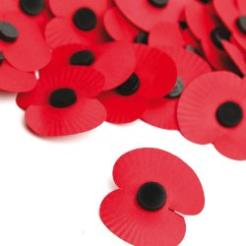![]()
The recession, an ageing supporter base and the introduction of powerful new players has transformed the military charity market. Celina Ribeiro looks at how competition and changing demographics has propelled charities, old and new.
October might be pink, but November is red. The deep, sombre crimson of poppies flooding lapels in the lead-up to Remembrance Day are as much a part of the British calendar as the leaves turning gold.
Since 2007 much has changed in the charity world, but few subsectors have been transformed as much as that of the military and services sector. Some things, like poppies, have remained. But even the mainstays have evolved and alongside poppies, we now have t-shirts, wristbands and polar treks.
In 2007 military charities were not in trouble. Steady legacy income and a loyal donor base meant the sector was stable, but the ground started to shift. Three important things converged. Not only had the World War I generation died out, but the typical supporter base of these traditional charities were also passing on. In October, sensing a gap in the market, Help for Heroes launched. On top of that, the global financial crisis of 2008 undermined fundraising confidence across the whole sector.
With these three factors, many in the services sector were concerned. Surely more players would mean increased competition for diminishing public donations?
But they needn’t have worried. According to research conducted by the Charities Aid Foundation, total income to armed forces charities increased by 36 per cent between 2008 and 2013 (excluding the Royal British Legion which doesn’t list itself as an armed forces charity on CAFs Charity Trends). The Legion however also experienced significant growth during this time. A separate survey by CAF published in July found that more than three out of four people in Britain had supported an armed forces charity within the previous year. The majority of those (68 per cent) had bought one of the iconic red poppies sold by the Legion to commemorate past wars; one in five had bought a wristband or other charity merchandise.
The question is: what lay behind this unexpected success?
Enter Help for Heroes
Against this trio of market changes, one thing remained true and important for the armed forces sector: the public was on its side. This support, and the visibility of armed forces and their significant losses in the media, meant the ground was – and remains – fertile for mass public support for military services charities. However, some felt that traditional charities were not tapping into this zeitgeist with the appropriate vigour or messaging.
Jamie Webb, head of income operations at Help for Heroes, says the market was ripe for a new entrant. “I don’t think the market was saturated, but it was focusing primarily on the service and ex-service community. Help for Heroes reached out to those who weren’t being touched by the current service charities with a different and slightly more direct message,” he says. “By removing politics from the cause, many people felt able to help the wounded men and women of the armed forces.”
But it wasn’t simply that Help for Heroes was apolitical. Traditional military charities would argue t{{image:{"asset":"6AA872FA-7E8F-4BA3-8233240D4230AA98","alt_text":"","dimensions":"","quality":"mediumPerformance","alignment":"auto","spacing":"5","copyright":"","caption":"","link":"","link_asset":"","link_page":"","link_target":"_self"}:image}}hat they too don’t align themselves with the politics of any government or party. What made Help for Heroes different was a brand which wasn’t tied to the wars of last century. It engaged commercial branding and tactics. It is a brand which is about young men and women, not old; about events and trading, not legacies and coins in buckets.
Energetic, young and with powerful celebrity and corporate endorsement, Help for Heroes grew spectacularly. After raising £14.6m in its first full year, ending September 2008, it trebled income in the space of two years, to £45.7m in 2009/10. Since then, income has levelled off, with a dip to £40.6m in 2012/13. But Help for Heroes says this was to be expected.
“We are looking to diversify the income streams. The continued growth of legacy income last year shows how our income model is changing,” says Webb. Last year, the charity received £3m from legacies.
While Help for Heroes may be consolidating its growth, another newcomer is on the rise.









